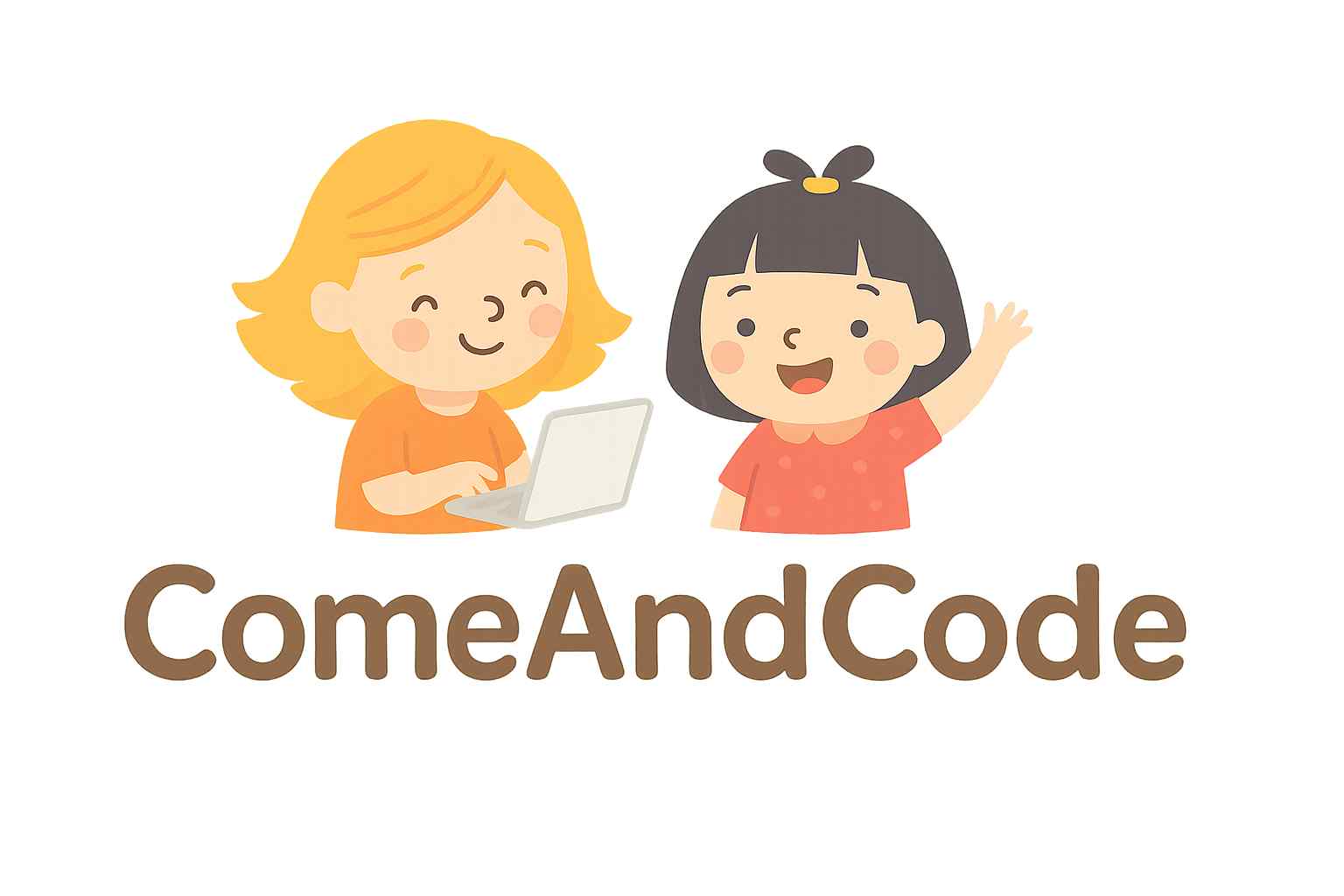Ideal Age to Learn Coding has become a vital skill. Many parents and educators wonder: what is the best age for children to start learning coding? While there isn’t a one-size-fits-all answer, various factors such as cognitive development, interest, and educational approaches can guide the decision. This article explores the ideal ages for learning coding, effective teaching methods, and how to support young learners on their coding journey.
1. The Importance of Learning Coding
1.1. Essential Skill for the Future
As technology permeates every aspect of life, coding skills are increasingly in demand across various fields, including healthcare, finance, and entertainment. Learning to code not only opens career opportunities but also equips individuals with problem-solving skills necessary in the digital age.
1.2. Enhancing Logical Thinking
Coding encourages logical reasoning and critical thinking. By breaking down problems and creating algorithms, learners develop a structured approach to problem-solving that benefits many areas of life.
1.3. Fostering Creativity
Coding is not just about numbers and syntax; it is also a creative process. Children can use coding to bring their ideas to life through games, animations, and apps, encouraging innovation and imaginative thinking.
2. Cognitive Development and Learning Stages
2.1. Early Childhood (Ages 4-6)
At this age, children are developing foundational cognitive skills. They can engage with coding through visual programming languages and toys designed to introduce basic concepts without the need for text-based coding.
2.1.1. Introduction through Play
Educational toys like LEGO Mindstorms or coding games like Osmo and Cubetto allow children to explore coding concepts through play. These tools help develop critical thinking and basic sequencing skills.
2.2. Middle Childhood (Ages 7-12)
During this stage, children can understand more complex concepts and start using text-based coding languages.
2.2.1. Engaging with Visual Programming
Platforms like Scratch allow children to create games and animations using block-based coding, making learning interactive and fun. This age is often when children can begin to grasp the fundamentals of coding logic and syntax.
2.3. Adolescence (Ages 13-18)
By the teenage years, learners can tackle more advanced coding languages such as Python, Java, or C++. Their cognitive abilities allow for deeper understanding and more complex projects.
2.3.1. Exploring Real-World Applications
Teenagers can start building real applications or websites, participating in coding boot camps, or even contributing to open-source projects. This age is also when they may begin to consider coding as a career option.
3. Factors Influencing the Ideal Age
3.1. Interest and Motivation
The ideal age to start learning coding can vary significantly based on a child’s interest. Encouragement from parents or educators can spark a passion for coding at any age.
3.2. Learning Environment
A supportive and resourceful learning environment plays a crucial role. Access to coding clubs, classes, or online resources can motivate children to start learning at an earlier age.
3.3. Individual Learning Pace
Every child learns differently. Some may be ready to start coding earlier than others, while some may take longer. Tailoring the approach to fit the child’s pace is essential for effective learning.
4. Recommended Coding Resources for Different Ages
4.1. Resources for Ages 4-6
- Tynker Junior: A visual programming platform designed for young kids to create simple stories and games.
- Kodable: An app that introduces coding through fun games and puzzles.
4.2. Resources for Ages 7-12
- Scratch: A free programming language and online community where kids can create their own interactive stories, games, and animations.
- Code.org: Offers a variety of interactive courses aimed at different age groups, focusing on both programming and computational thinking.
4.3. Resources for Ages 13-18
- Codecademy: Provides interactive courses on various programming languages, from beginner to advanced levels.
- Khan Academy: Offers computer programming courses that cover the basics and beyond, including game development and web design.
5. Teaching Methods and Approaches
5.1. Hands-On Learning
Engaging children in hands-on projects enhances their understanding. Building apps or games allows learners to apply what they’ve learned in practical ways.
5.2. Game-Based Learning
Incorporating game elements can make learning to code more engaging. Platforms that gamify coding concepts keep students motivated and eager to learn.
5.3. Collaborative Learning
Encouraging group projects fosters teamwork and communication skills. Working together to solve coding challenges can make the learning experience more enjoyable.
6. The Role of Parents and Educators
6.1. Encouragement and Support
Parents and educators play a vital role in fostering a positive attitude toward coding. Encouragement, praise, and involvement can boost a child’s confidence and interest in learning.
6.2. Setting Realistic Expectations
It’s important to set achievable goals for young learners. Understanding that mistakes are part of the learning process helps children develop resilience and perseverance.
6.3. Providing Resources
Offering access to coding tools, books, and online courses is crucial. Parents and educators should also stay informed about new developments in coding education to guide learners effectively.
7. Overcoming Challenges in Learning Coding
7.1. Dealing with Frustration
Coding can be challenging, and learners may experience frustration. Teaching problem-solving techniques and promoting a growth mindset can help children overcome obstacles.
7.2. Balancing Screen Time
While coding often involves screen time, it’s important to balance it with offline activities. Encourage breaks and outdoor play to maintain a healthy lifestyle.
7.3. Avoiding Burnout
To prevent burnout, ensure that coding remains a fun and enjoyable activity. Encourage learners to explore different aspects of coding without pressure or stress.
8. Real-world applications of Coding
8.1. Career Opportunities
As students grow older, the relevance of coding in various career fields becomes apparent. Exposure to coding can lead to opportunities in software development, data science, game design, and more.
8.2. Problem-Solving Skills in Everyday Life
Coding teaches valuable problem-solving skills applicable in everyday life. From organizing tasks to tackling complex challenges, coding fosters a mindset that can be beneficial beyond the tech world.
8.3. Contribution to Society
Learning coding empowers young people to create solutions that can positively impact their communities. Young coders can drive change by developing apps for social issues or contributing to open-source projects.
9. The Future of Coding Education

9.1. Trends in Coding Education
As technology continues to evolve, so do educational methods. Emerging trends include:
- Integration of AI: Using artificial intelligence tools to assist with coding education.
- Virtual Reality (VR): Incorporating VR environments for immersive learning experiences.
9.2. Increased Accessibility
Online platforms and coding boot camps are making coding education more accessible than ever. With resources available for free or at low cost, learners from all backgrounds can benefit.
9.3. Lifelong Learning
The coding landscape is continually changing, emphasizing the importance of lifelong learning. Encouraging young learners to adopt a mindset of continuous education will serve them well throughout their lives.
10. Conclusion
Determining the ideal age for learning coding varies depending on the individual child and their unique circumstances. While early childhood offers a wonderful opportunity to introduce basic concepts through play, middle childhood and adolescence provide the chance for deeper learning and real-world applications. By fostering interest, providing resources, and encouraging creativity, parents and educators can empower children to embrace coding as a valuable skill that will serve them well in the future. With the right support and mindset, anyone can learn to code—regardless of age!

